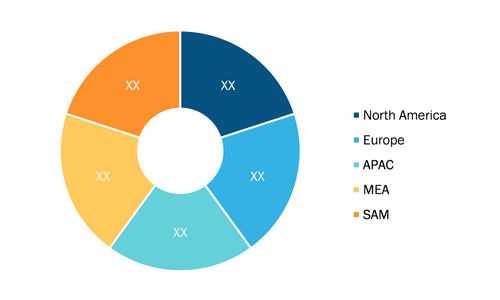According to our latest market study on “Cold Forming and Cold Heading Market Forecast to 2028 – COVID-19 Impact and Global Analysis – by Material and Industry,” the market is expected to grow from US$ 19,510.15 million in 2022 to US$ 27,332.39 million by 2028; it is estimated to grow at a CAGR of 5.8% from 2022 to 2028.
Heads and cold-forming machines have become advanced. For example, a machine currently manufactured with five or more dies. A function that enables the production of long parts and short parts. Adjustments change the timing of cutter blades, feed strokes, transfers, and kick-outs function. CNC control provides operators immediate access to production data. Quick change setup allows for both punch and die components. It can be setup and customized offline and requires minimum production time. A multi-station cutter that performs stationary and extruded cold-forming operations is also significantly increasing headline production rate and capacity. Increasing knowledge of metallurgy will allow heading and cold to form stronger material. Manufacturers of special alloys, such as carpenters, can control the analysis and production of varieties more accurately to meet them. With higher corrosion resistance, Starch on the headboard. It is now possible to have a specific AISI if good cold forming characteristics and consistent performance are desired. Grades are manufactured within controlled analytical limits to improve cold formability and secondary machining operations. In other cases, the analysis has been modified for cold working to manufacture a particular fastener draft economically. For instance, Sturdy tool steel extends the life of the upset die producer Alloys such as carpenters are versatile enough to handle manufacturing operations requiring head molding and machining. These factors are influencing the growth of the cold forming and cold heading market over the years
Impact of COVID-19 Pandemic on Cold Forming and Cold Heading Market
During the COVID–19 pandemic, the operations of the overall commercial aviation industry were discontinued, with minimal resources to foresee the future. Several production units in the US, France, Russia, and China were also temporarily discontinued to adhere to the government rules regarding lockdown and physical distancing. The aircraft manufacturers witnessed a 30-50% reduction in demand for several aircraft models, especially commercial aircraft models. The lower aircraft production and assembly have decimated the demand for cold forming and cold heading, resulting in lower revenue generation. This factor negatively impacted the cold forming and cold heading market size. Despite massive backlogs from aircraft manufacturers, the aerospace industry was experiencing significant growth in terms of production and services before the onset of the COVID-19 outbreak. Additionally, the global aviation industry saw a significant increase in passenger numbers, aircraft procurement (both commercial and military), and MRO activities. Thus, the negative effects of the COVID-19 pandemic on the cold forming and cold heading industry were only felt for a brief period of time. By end of 2022, it is projected that the market will have recovered quickly and that there will be a large market for cold forming and cold heading following the pandemic. This is because more market participants are reevaluating their plans and developing prompt solutions to stabilize their supply chains.
By materials, the cold forming and cold heading market size is segmented into aluminum, alloy steel, stainless steel, and other. Material selection for cold molded parts is important in cold forming and cold heading. High-quality materials are purchased to cold forged raw material specifications with stringent requirements for material chemistry and surface defect suppliers. The initial cost of raw materials can be high, but the additional initial cost is worth eliminating quality issues later. Cold forging materials are specially treated (annealed) to withstand the intense upsets and extrusions during the cold forging process. The alloy steel segment led the cold forming and cold heading market share in 2021 and is expected to lead the market during the forecast period.
The cold forming and cold heading market size is segmented on the basis of material, industry, and geography. Based on material, the market is segmented into aluminum, alloy steel, stainless steel, and others. Based on industry, the cold forming and cold heading market is segmented into aerospace & defense, automotive, industrial equipment & machinery, and others. By geography, the cold forming and cold heading market is primarily segmented into North America, Europe, Asia Pacific (APAC), the Middle East & Africa (MEA), and South America.
Stanley, Kalyani Forge, Altra Industrial Motion Corp, Deringer-Ney Inc, and Cold Formed Products are a few key cold forming and cold heading market players. In addition, several other important companies were studied and analyzed during this study to get a holistic view of the global cold forming and cold heading market and its ecosystem.
Cold Forming and Cold Heading Market Share – by Region, 2021
Cold Forming and Cold Heading Market Forecast to 2028 - COVID-19 Impact and Global Analysis By Material (Aluminum, Alloy Steel, Stainless Steel, and Others) and Industry (Aerospace & Defense, Automotive, Industrial Equipment & Machinery, and Others)
Cold Forming and Cold Heading Market Analysis by Size & Share 2028
Download Free Sample